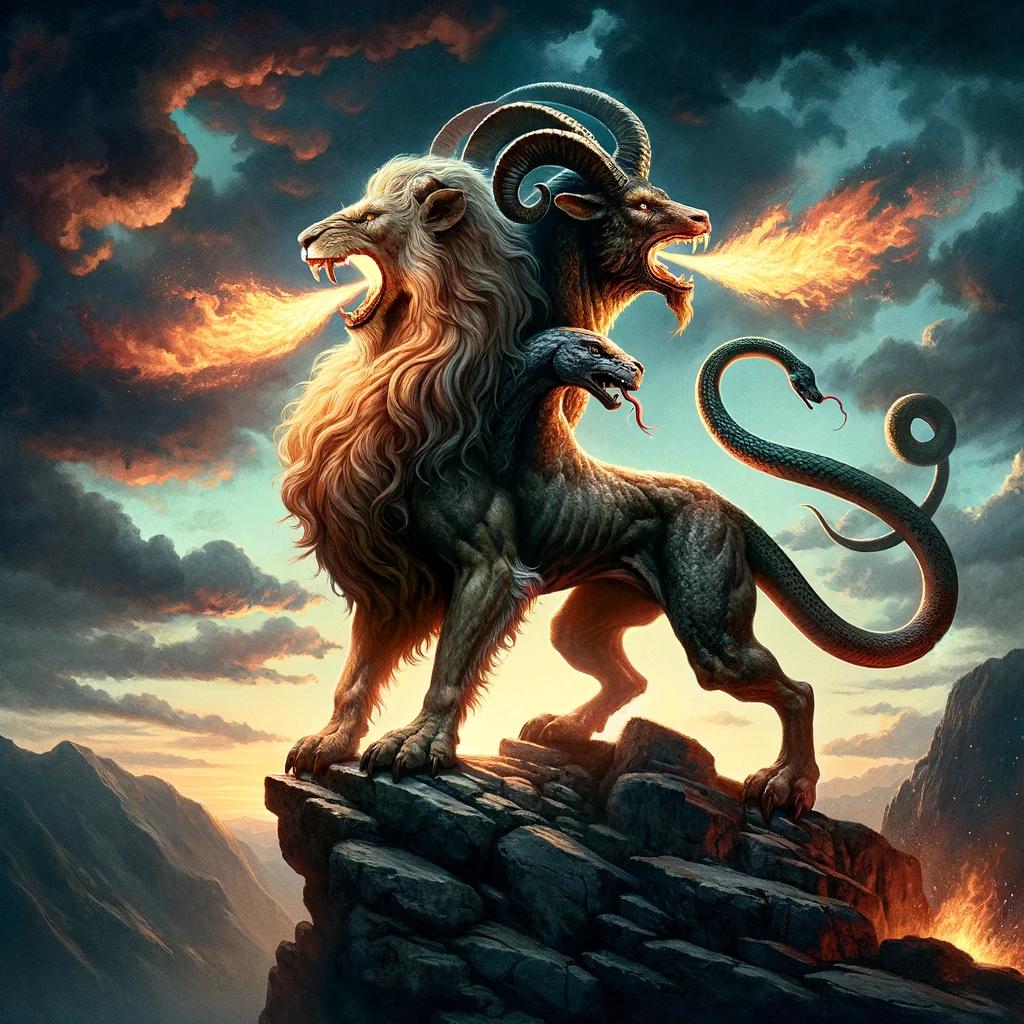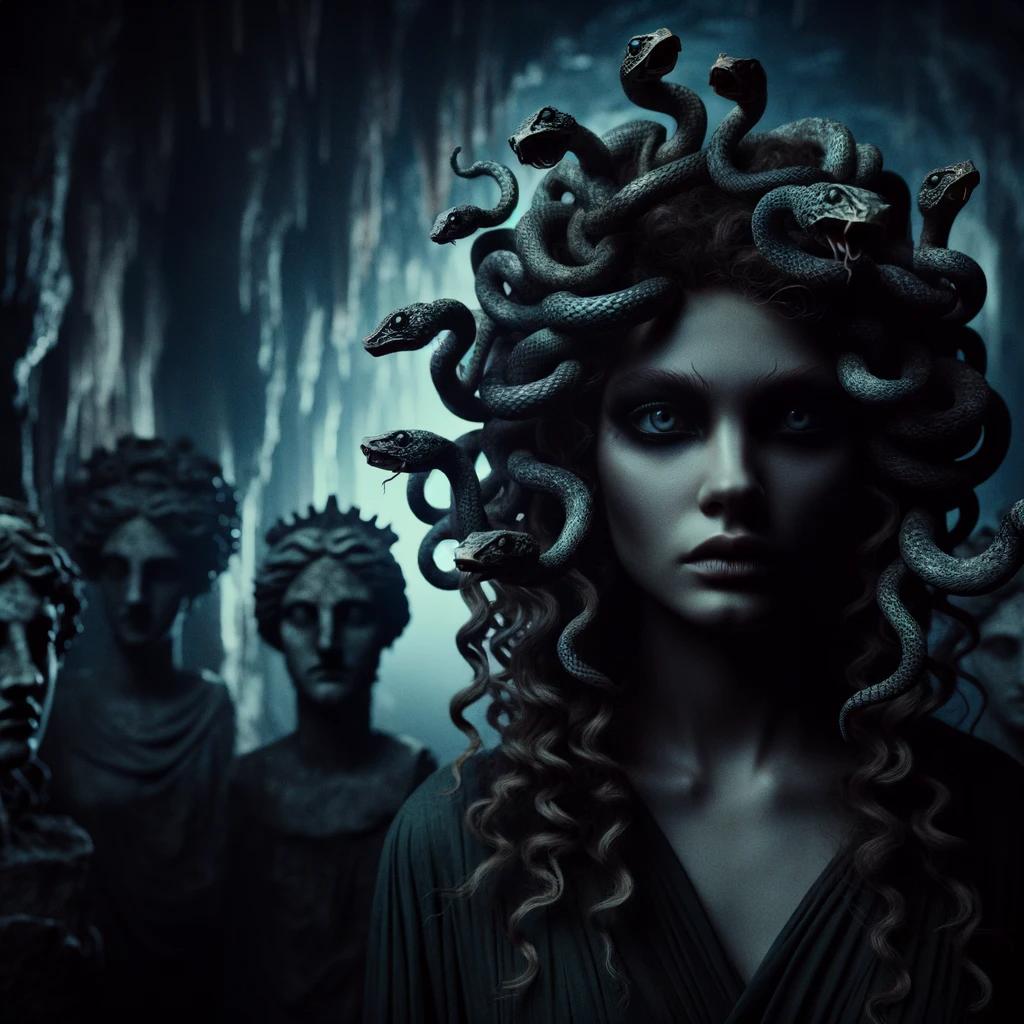Exploring the Realm of Aether in Greek Mythology: Unveiling its Enigmatic Brilliance

Aether, a primordial deity in Greek mythology, embodies the essence of light and the radiant blue ether of the heavens. Born from Erebus (Darkness) and Nyx (Night), Aether dwells betwixt the solid heavens and transparent mists of earthly air.
Associated with the upper air and celestial domain, Aether’s brilliance illuminates the realm of gods and separates day from night. This article explores Aether’s origins, family connections, cosmological significance, and symbolic representations in ancient Greek mythology.
It delves into Aether’s relationship with Hemera (Day) and Nyx, as well as the role of Aithre, Aether’s female counterpart. We also examine Aether’s portrayal in Orphic myth and his notable presence in ancient Greek art.
Origins of Aether in Greek Mythology
Aether, a prominent deity in Greek mythology, holds a significant place as one of the primordial divinities associated with the celestial realm. This section explores the origins of Aether, shedding light on various aspects of his birth and role within cosmogonies.
The Primordial Birth of Aether
Diving into the depths of Greek mythology, the birth of Aether emerges as a captivating tale. As the personification of the bright blue ether that fills the skies, Aether represents the pure and luminous upper air.
Aether as the Son of Erebus and Nyx
In Greek mythology, Aether is believed to be born from the union of Erebus, the personification of darkness, and Nyx, the embodiment of night. This divine lineage intertwines darkness and light, giving Aether a unique place in the mythological hierarchy.
Aether’s Siblings: Hemera and Nyx
Among Aether’s siblings, Hemera, the primordial goddess of day, and Nyx, the personification of night, play crucial roles in the celestial order. These familial connections form intricate dynamics within Greek mythology, shaping the cyclical nature of light and darkness.
Aether’s Role in Cosmogonies
Within ancient cosmogonies, Aether stands as one of the fundamental elements involved in the creation of the universe. His presence and connection to the Earth, along with his siblings Hemera and Nyx, give birth to vices that plague humanity, as well as powerful beings like the Titans and giants.
Aether and Hemera: The Dynamic Duo
Aether and Hemera, two primordial deities in Greek mythology, form a powerful duo that influences the cycle of day and night, as well as the creation of Earth, Sky, and Sea.
Let’s explore their union, Hemera’s contribution to the concept of day and night, and their notable offspring.
Aether and Hemera’s Union
The union between Aether and Hemera brings forth the delicate balance of light and darkness in the world. As the embodiment of the bright upper air, Aether complements Hemera, the goddess of Day, in maintaining the celestial harmony.
Hemera’s Contribution to Day and Night
Hemera’s vital role is to illuminate the world during the day, dispelling the dark veil of night created by her mother Nyx. Her presence signifies the beginning of daylight, allowing mortals and gods to thrive under the golden rays of the sun.
Aether and Hemera’s Offspring: Earth, Sky, and Sea
The divine union between Aether and Hemera gives rise to three fundamental elements: Earth, Sky, and Sea. Together, they give shape to the physical and elemental aspects of the world.
Earth, represented by Gaia, lays the foundation for life, Sky personified by Uranus encompasses the heavens, and Thalassa embodies the vastness of the Sea.
Aether and Nyx: Darkness and Light
The Connection between Aether and Nyx
In Greek mythology, Aether and Nyx are closely connected as siblings and primordial deities.
Aether, the son of Erebus and Nyx, personifies the bright and radiant air of the heavens, while Nyx represents the personification of night. This familial bond between Aether and Nyx forms a fundamental aspect of the Greek cosmogony, highlighting the intimate relationship between darkness and light.
Nyx’s Influence on Aether’s Brilliance
Nyx, the embodiment of darkness, exerts a significant influence on Aether’s brilliance. By shrouding the heavens in her dark veil each night, Nyx obscures Aether’s luminosity, plunging the world into darkness.
This interplay between light and darkness emphasizes their intricate and harmonious nature within the Greek mythological framework, symbolizing the cyclical nature of day and night.
Aether’s Role in Separating Night and Day
Aether plays a crucial role in separating night and day, acting as the boundary between darkness and light.
In the morning, Hemera, Aether’s sister and wife, dispels the night’s mist, revealing the radiant blue of Aether’s realm and ushering in the brilliance of the day. Aether’s presence allows for the distinct division of night and day, contributing to the cosmic order and the cyclical nature of the mythological world.
Aether’s Domain: The Celestial Realm
The celestial realm is the sacred abode of Aether, the primordial god representing the upper air and pure brilliance. In Greek mythology, Aether is intimately associated with the heavens, standing as a powerful force that separates the earthly realm from the divine.
Aether’s Association with the Upper Air
Aether’s domain encompasses the lofty heights, including the summits of mountains, the vast expanse of the sky, and the celestial spheres above. As the embodiment of the upper air, Aether fills these regions with its luminous presence, bathing the world in its ethereal light.
Aether as the Abode of Gods
Aether serves as the dwelling place of the gods, where they reside in splendor and harmony. Within the celestial realm, Zeus, the king of the gods, reigns supreme, surrounded by the divine pantheon.
Aether’s radiant atmosphere provides the perfect setting for the divine beings to exist and govern the mortal and immortal realms.
The Protective Nature of Aether
Aether functions as a shield, safeguarding the mortal realm and separating it from the dark depths of Tartarus. With its luminosity and pure essence, Aether acts as a protective barrier, shielding the mortal world from malevolent forces and ensuring the harmony of the cosmos.
- Aether’s brilliance guards mortals from the ominous influences of the underworld.
- Its divine presence acts as a shield against chaotic and disruptive forces.
- Aether’s role in maintaining order and balance is vital for the welfare of both mortals and gods.
In conclusion, the celestial realm, ruled by Aether, epitomizes the upper air and serves as the haven for the gods.
Aether’s luminous influence emanates throughout the realm, embodying protection and separation from malevolent forces. It stands as a testament to the divine brilliance within Greek mythology, shaping the delicate balance between the mortal and immortal realms.
Aithre, the Female Counterpart of Aether
Aithre, also known as Aethra, is a Titaness in Greek mythology who personifies the clear blue sky. She is closely associated with Aether, representing the celestial counterpart to his brilliance and purity.
Aithre as a Titaness of the Clear Blue Sky
Aithre is revered as a Titaness who reigns over the vast expanse of the clear sky. Her domain encompasses the heavens, where she brings forth radiant light and endless serenity. As the embodiment of the blue sky, Aithre evokes a sense of awe and majesty that inspires mortal and divine alike.
Aithre’s Role as a Mother of the Sun and Moon
Aithre holds a vital role as the mother of the Sun and the Moon, two celestial bodies that govern the cycles of light and darkness in the world. Her union with Aether gives birth to Helios, the Sun God, and Selene, the Moon Goddess, bestowing upon them the power to illuminate the sky and bring illumination to the Earth.
This divine lineage highlights the significance of Aithre’s connection to the celestial realm and her instrumental role in maintaining cosmic balance.
- Aithre personifies the clear blue sky and the splendor of the heavens.
- She is revered as a Titaness, a powerful deity with dominion over the celestial realm.
- Aithre is the mother of Helios, the Sun God, and Selene, the Moon Goddess, ensuring their celestial radiance.
Through her presence, Aithre perpetuates the divine harmony between Aether and the celestial luminaries, enveloping the world in the ethereal beauty of the heavens.
Aether in Orphic Mythology
Aether holds a significant place in Orphic mythology, offering a unique perspective on his role in the creation mythos. In this tradition, Aether is often portrayed as the soul of the world, emanating the essence of life itself.
Fueled by the belief that everything in the cosmos is interconnected, Orphic teachings recognize Aether as the primordial source from which all life emerges. According to Orphic texts, Aether played a vital part in the formation of the cosmic egg, replacing Chaos as the ultimate creative force.
Aether as the Soul of the World
Within Orphic philosophy, Aether assumes a profound metaphysical significance, representing the animating force that brings vitality and consciousness to the universe. As the soul of the world, Aether permeates every aspect of existence, acting as the life-giving energy behind all living beings, celestial bodies, and natural phenomena.
This concept asserts that Aether is the foundational essence from which all forms of life, both mortal and divine, derive their vitality and spiritual essence.
Aether’s Involvement in the Creation of All Life
Orphic mythology attributes a central role to Aether in the creation of all life forms. It is believed that from the cosmic egg, born as a result of Aether’s influence, emerged a primal androgynous deity named Fanes or Protogonus.
This divine being became the progenitor of all gods and mortals, masterfully shaping the destiny and destiny of the cosmos. Aether’s involvement in this creative process highlights his pivotal position within the celestial hierarchy, acting as the catalyst for the birth and development of the divine and mortal realms.
Aether’s Significance in the Orphic Hymns
The Orphic Hymns, ancient poetic compositions honoring various deities, contain verses dedicated to Aether. These hymns celebrate Aether’s divine nature, praising his role as the sustainer of life and the embodiment of celestial radiance.
They emphasize Aether’s connection to the cosmos and emphasize the importance of cultivating a harmonious relationship with this divine force in order to attain spiritual enlightenment and transcendence. The Orphic Hymns serve as a testament to Aether’s revered position within the Orphic tradition and his enduring significance as an object of worship and devotion.
Aether’s Symbolism and Representation
The concept of Aether in Greek mythology carries profound symbolism and diverse representations, embodying the essence of pure air and light. Within this symbolism, Aether portrays a celestial purity and brilliance that distinguishes it from other elements of the cosmos.
Aether as the Essence of Pure Air and Light
Aether is often regarded as the epitome of pure air and luminous light. It represents the ultimate clarity and brilliance that pervades the heavens, encapsulating a realm untouched by darkness or impurities.
Aether’s symbolism transcends physicality, signifying the spiritual and ethereal aspects of existence. It serves as a reminder of the celestial beauty and divine energy that flow through the universe.
Aether’s Presence in Ancient Greek Art
The artistic depictions of Aether in ancient Greek art offer fascinating insights into its symbolic importance.
Though specific representations of Aether are scarce, its presence can be inferred through the portrayal of celestial scenes, where a bright blue expanse symbolizes the divine and transcendent realm. Aether is often depicted as an ethereal celestial figure encompassing the sky, sometimes intertwined with other deities or celestial bodies.
Depicting Aether’s Role in the Battle against the Giants
A notable portrayal of Aether can be found in the artwork depicting the epic battle between the gods and the Giants. Aether is depicted as a powerful force fighting alongside other gods, combining the elements of air and light to aid in the defeat of the Giants.
These artistic representations highlight Aether’s role as a guardian and defender of the celestial realm, actively involved in the cosmic struggles against chaos and destruction.
- Aether embodies the essence of pure air and light, symbolizing celestial brilliance and clarity.
- Aether’s presence can be inferred through ancient Greek art, where depictions of celestial scenes allude to its existence.
- Aether is portrayed as a powerful force in the battle against the Giants, emphasizing its role as a guardian and protector of the celestial realm.
These representations of Aether emphasize its significance in Greek mythology and its various symbolic roles within the cosmic order, perpetuating its enduring influence in the ancient Greek worldview.
Interpretations and Perspectives on Aether
Interpreting the role of Aether in Greek mythology offers valuable insights into the diverse origins and perspectives surrounding this celestial deity. Exploring various sources and cosmogonic narratives, we can discern the multifaceted nature of Aether’s existence.
Varied Genealogies: Aether’s Origins in Different Sources
Aether’s genealogy encounters differing accounts depending on the ancient sources examined. While Hesiod’s Theogony identifies Aether as the son of Erebus and Nyx, other cosmologies propose alternative parentage, tracing his lineage to Chaos and Caligo (‘Mist’).
These divergent genealogical paths reflect the complexity and evolving nature of Greek mythology.
Aether’s Role in Early Greek Cosmogonies
In early cosmogonic narratives, Aether plays a pivotal role in the creation of the universe. As one of the primordial substances, Aether contributes to the formation of the cosmos, bringing forth life and establishing the essential elements of existence.
The significance of Aether’s involvement underscores its integral role in shaping the Greek mythological framework.
Aether in the Context of Greek Deities and Mythological Figures
- Aether’s Relationships with Divine Beings: As an elemental deity, Aether interacts with various gods and goddesses, forging connections within the divine hierarchy. These relationships highlight Aether’s importance in Greek mythology and its impact on the behavior and interactions of other mythological figures.
- Aether’s Influence on Mortals: While primarily associated with the celestial realm, Aether’s influence extends to mortal beings.
Its role as a protector, separating the earthly realm from the depths of Tartarus, demonstrates its significance in safeguarding humanity from the darkest forces of the universe.
- Aether’s Symbolism and Allegorical Considerations: Ancient Greeks employed allegorical representations and symbolism to understand the cosmos.
Aether’s association with light, enlightenment, and purity aligns it with notions of harmony, transcendence, and the pursuit of divine knowledge.
Examining these interpretations and perspectives on Aether sheds light on its intricate place within Greek mythology.
As a deity with varied origins and significant roles in cosmogonies, Aether’s influence permeates the divine and mortal realms, contributing to the rich tapestry of ancient Greek mythos.
.




















